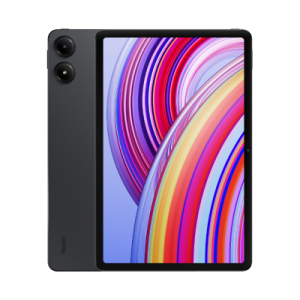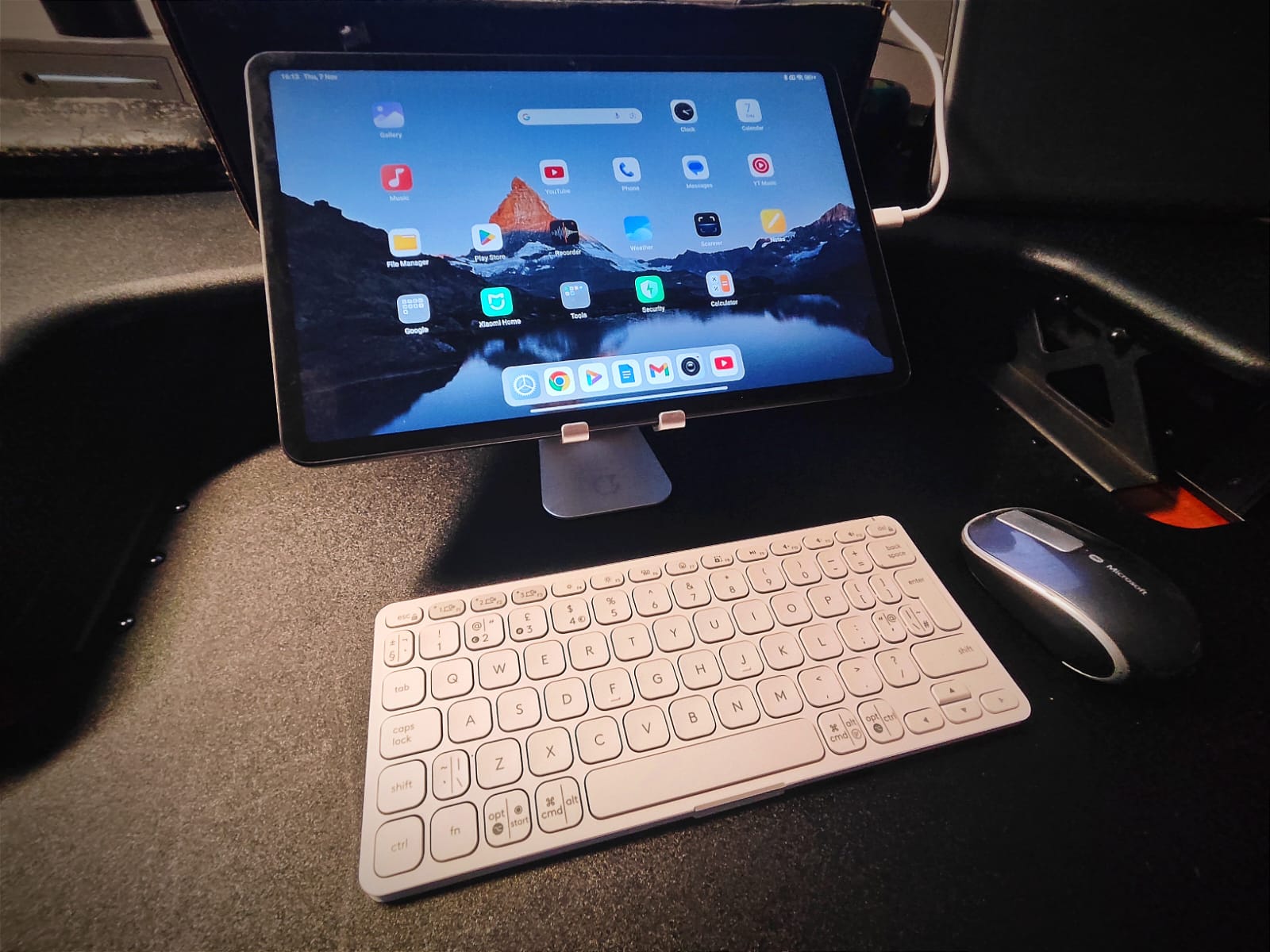Xiaomi Redmi Pad Pro
As it’s Christmas (well, nearly) and I updated my Android mini tablet option last year with around this time, I decided that it was time to “go large” and get something more powerful, with a bigger screen and – I hoped – the potential to use as work device and not just something to watch television on.
I went for the Xiaomi Redmi Pad Pro in graphite gray, 8 GB + 256 GB for £299.00… although a 6 GB version is available for £229 at the time of writing.
I guess the thing that drew me to this device most was the large 12.1″ 2.5K display and – and I’ve said this before with Xiaomi devices, the compatibility freedom i.e. when you want to connect these products to your PC to drag movies (okay I said I wasn’t just going to watch TV) and music (while I work, right?) it just works without the need for drivers and additional upload apps.
NOTE: Actual display size is 12.1-inch with a 16:10 aspect ratio.
That factor really means I can start to use this alongside a laptop (with a Bluetooth keyboard) when I’m on the go, on the plane and possibly even in keynotes and meetings without having to lump a whole laptop along. An (admittedly rather old Microsoft “Scuplt” Bluetooth mouse connected perfectly and allows cursor control on the screen.
So then, what’s in the box and is it all worth it?
HyperOS & Snapdragon 7s
Xiaomi has shipped this device with its HyperOS operating system and a Snapdragon 7s Gen 2 Mobile Platform. Actually, it’s powerful enough for gaming, although I personally confine my gaming to Xbox, the screen performance is well up to it. If you want to get technical (and why not?), it has a 120Hz adaptive refresh rate and a maximum brightness of 600 nits – and please ask what “nits” are.
According to screen display company Riverdi “Nits are a unit of measurement used to quantify the brightness of electronic displays, particularly those with emissive technologies like LEDs, OLEDs and microLEDs. One nit is equivalent to one candela per square meter (cd/m²).”
Xiaomi claims that the device will provide 33.9 days of standby time after a full charge, quite why you’d leave your device for a full month is anybody’s guess, but it’s good to know. The 12.1 hours of video playback and 15.1 hours reading duration are probably more useful numbers to remember and it would be tough to work on Word docs for longer than 15 hours, so it’s going to last a full flight (one of my standard measures of functionality) for sure.
Sounds better in Dolby
The Xiaomi Redmi Pad Pro ships with four Dolby Atmos speakers.
“With four stereo speakers supporting Dolby Atmos and paired with the newly upgraded Dolby Vision, Redmi Pad Pro brings you stunning cinematic experiences from supreme sound quality to high-fidelity pictures and cinema-level shock effects.,” states Xiaomi, perhaps somewhat overenthusiastically.
When no Wi-Fi signals are available nearby, this tablet can connect to a Xiaomi phone’s hotspot with one click instead of turning on a hotspot or entering a password. It’s a nice feature, but where would you stop and sit down without Wi-Fi today? The company has come forward with its first smart pen to pair with this device and there’s also a dedicated Redmi keyboard, which looks like a nice option, but at an additional £80 I didn’t go for it.
Although taking pictures with a tablet is generally something you’d only expect pensioners to do, the camera is good quality (it’s 8 megapixels in front and rear) and Xiaomi says that a dual-ring “Deco camera” design – a camera with light sensors built-in, basically – cleverly hides the device antenna. The unit is 7.52mm thick (pretty much the same as a smartphone) and weighs in at 571g (that’s about a pint of beer).
I’d rather jack
 Thankfully (and I do have plenty of Bluetooth headphones), Xiaomi has still included a 3.5mm headphone jack in this unit. It just feels right and proper, so it’s there. There’s also an option for 1.5 terabyes of additional storage if needed, but of course you are looking at around another £100 for that kind of storage (at the time of writing).
Thankfully (and I do have plenty of Bluetooth headphones), Xiaomi has still included a 3.5mm headphone jack in this unit. It just feels right and proper, so it’s there. There’s also an option for 1.5 terabyes of additional storage if needed, but of course you are looking at around another £100 for that kind of storage (at the time of writing).
Redmi (meaning red rice) was originally a budget brand sister to the main Chinese electronics company Xiaomi, but it’s now positioned rather more directly as a entry-level and mid-range brand, which is fair enough given the specs on this device. Yes there are faster Snapdragon processors and yes you can get your hands on more storage, but if 90%+ of the functionality you need is available cheaper, it seems like a smart enough move.
Xiaomi (which my neighbour with Hong Kong ancestry can pronounce correctly and I can’t) underlines the functionality of the device by saying that it supports fast-charging on a 33W power unit (which it does ship with… and which was a surprise) and the set-up was simple (I scanned the QR code it generates on my smartphone to gain almost immediate access) so it all works – okay it doesn’t support eSims and there’s no fingerprint scanner, but what the heck.
Future-proofed use?
Having just consigned an old iPad mini for use as a chopping board because it won’t connect to 2024 Wi-Fi security protocols, the Xiaomi Redmi Pad Pro with its all-metal unibody design and stainless steel sides is future-proofed to the degree that the company says it will deliver security patches until June 2027, perhaps longer if it feels like it.
Final comments then, the Xiaomi HyperOS experience is better than some Android tablet functionalities (i.e. you don’t get a duplicate app instance icon hidden below on a lower ‘swipe up’ screen thankfully) and although the company has ‘pushed’ some of its own apps on users at set-up, I’ve definitely seen worse overloads and they are easy to clear up. There’s even a clever split-screen option for running two apps (plus a floating window) if a user wants to work on the device as I do.
Overall, it’s good value for loads of functions and feels like a quality product, it might be tough to pronounce Xiaomi correctly, but the tablet is good.





